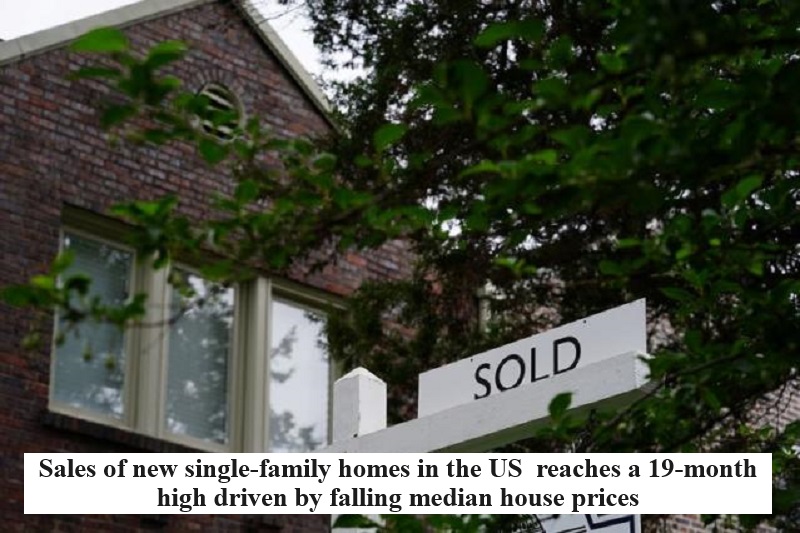
In September, there was a notable surge in the sale of new single-family homes in the United States, reaching a peak not seen in 19 months. This increase was attributed to a decline in median house prices, which experienced their most significant drop since 2009. Builders offered incentives to attract buyers, leading to this price reduction. However, the rise in mortgage rates, now approaching 8 percent, may potentially dampen the demand for new homes. This is despite a persisting shortage of previously owned houses, which is steering buyers toward new construction. The majority of homes sold in September fell within the price range of $150,000 to $499,999, according to the Commerce Department.
Bill Adams, Chief Economist at Comerica Bank, cited by Reuters, explained that builders are using tactics such as interest rate buy-down incentives and reducing the size of floor plans to enhance affordability for prospective buyers. These strategies have created distinct dynamics in various segments of the housing market.
The notable increase in new home sales in September marked a 12.3 percent rise to a seasonally adjusted annual rate of 759,000 units, the highest level since February 2022. August’s sales figures were also revised upward to 676,000 units, slightly better than the initially reported 675,000 units. This unexpected growth in sales defied economists’ predictions, which had estimated a rate of 680,000 units.
New home sales serve as a leading indicator for the housing market because they are counted when a contract is signed. These figures revealed a substantial year-on-year acceleration of 33.9 percent in September.
The new construction market is benefiting from the scarcity of existing homes, prompting builders to maintain the momentum. The National Association of Home Builders reported that in October, builders offered an average price discount of 6 percent, reaching a 10-month high. These tactics are making homeownership more accessible and driving activity in the market.
While the median price of new homes saw a significant 12.3 percent decline from the previous year, the most substantial percentage drop since February 2009, this did not deter buyers. The bulk of transactions occurred in the price range of $150,000 to $499,999, with an increase in sales in the $500,000 to $749,000 price bracket.
Nevertheless, the rise in mortgage rates presents a potential challenge to future sales. With the 30-year fixed-rate mortgage approaching 7.9 percent, the highest level since September 2000, the Mortgage Bankers Association reported a decrease in mortgage applications to levels last observed in 1995. Mortgage rates have risen alongside the 10-year U.S. Treasury yield, which hovers just below 5 percent due to concerns that the Federal Reserve may maintain higher interest rates for a more extended period in response to the robust economy. Since March 2022, the central bank has raised its benchmark overnight interest rate by 525 basis points, reaching a range of 5.25 percent to 5.50 percent.
By the end of September, there were 435,000 new homes on the market, up from 432,000 in August. It would take 6.9 months to sell all the houses on the market at the sales pace seen in September, as opposed to 7.7 months in August. Economists anticipate that the housing market may have stabilized in the third quarter, thanks to strong homebuilding and new home sales. This has led to expectations of a rebound in residential investment after nine consecutive quarters of contraction.

Post Your Comments